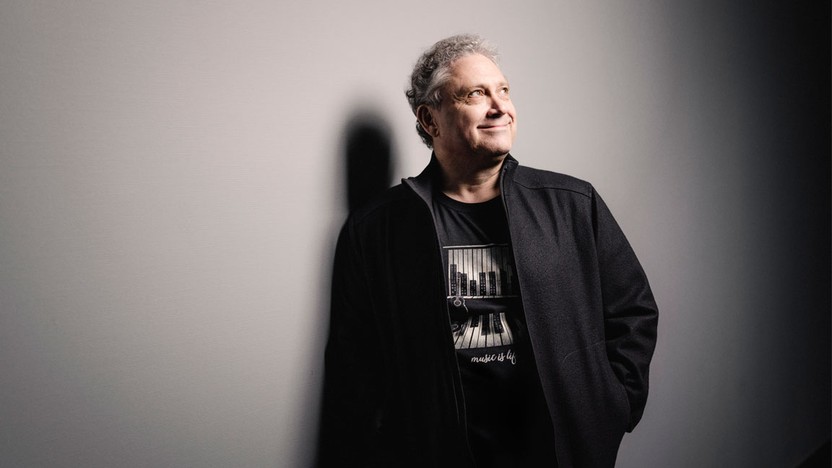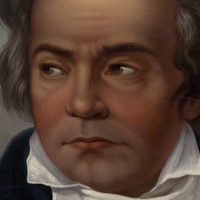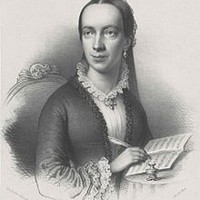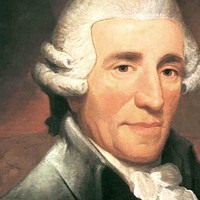Haydn’s Drum Roll Symphony with Richard Egarr



Ludwig van Beethoven arrived in Vienna in 1792 and made a splash as a keyboard virtuoso, but his reputation as a composer didn’t catch up until around 1800. One shrewd move he made that year was his dedication of the Septet (Opus 20) to the Empress Maria Theresa; she was impressed enough that she recommended him the next year for a high-profile ballet commission.
The ballet’s creator, Salvatore Viganò, was a famous dancer and choreographer visiting from Italy. As he wrote in the program book for the premiere at Vienna’s Burgtheater, he borrowed from the Greek myth of Prometheus, “a lofty soul who drove the people of his time from ignorance, refined them by means of science and the arts, and gave them manners, customs and morals.” According to his summary, “Two statues that have been brought to life are introduced in this ballet; and these, through the power of harmony, are made sensitive to all the passions of human life.”
The Overture to The Creatures of Prometheus leaps right in with a sense of forward motion generated by its unstable first chord — a harmonic trick that Beethoven recycled from his First Symphony, composed a year earlier. The restless, running themes of this spry overture recall Wolfgang Amadeus Mozart’s breathless overture to The Marriage of Figaro, showing how well Beethoven absorbed the lessons of his hero and Viennese predecessor.
Aaron Grad ©2025

Emilie Mayer, as the daughter of her town’s well-off pharmacist, had access to piano lessons starting at the age of five, and she soon began composing her own small pieces. She lived at home caring for her widowed father until he died when she was 28, at which point she took her sizable inheritance and moved to the Prussian city of Stettin so she could study composition with Carl Loewe, who praised his new student’s “God-given talent.”
Under Loewe’s supervision, Mayer drafted her Symphony No. 1 in C Minor sometime before 1847. A performance that year of her first two symphonies by the local orchestra society was something of a graduation, for Loewe encouraged her at that point to pursue the advanced education and wider opportunities that were available in Berlin. Overcoming the enormous resistance to a woman producing such grand, public-facing works as symphonies and overtures (as opposed to more palatable salon fare like piano pieces and songs), Mayer self-published her own scores and financed performances. She remained active as a composer until her death in 1883.
Mayer’s First Symphony shares Felix Mendelssohn’s orientation toward the models of Wolfgang Amadeus Mozart and Ludwig van Beethoven. Her slow introduction takes the form of a dirge that recalls the similar funeral march in Beethoven’s Third Symphony, in the same key of C-minor. Just before reaching the fast body of the movement, a rhythmic pattern of short-short-short-long echoes other iconic music that Beethoven wrote in the same key, the Fifth Symphony. The main theme of the Allegro energico section, voiced in unison and encircling the notes of the home triad, has a distinctive Mozart flavor, recalling related themes in his C-minor Piano Concerto (K. 491) and his Symphony No. 40 in G Minor. Mayer’s grasp of formal structure and pacing, supported by bold dynamic contrasts, surging crescendos, and clever key changes, show her mastery of the classic Viennese style.
The sweet theme that begins the Adagio could have set this slow movement on an unassuming course, but instead it serves as a foil for colorful contrasting episodes, including a turn back toward minor-key music powered by the might of trumpets and timpani. The Allegro vivace third movement serves as a scherzo, breaking off its stern counterpoint for waltz-like departures and a contrasting section in the style of a minuet.
After a slow introduction that builds tension over a held pedal tone, the finale arrives with a scurrying theme that once again channels Mozart’s 40th Symphony. Quick cuts and grand pauses show off Mayer’s boldness within established templates, using silence as a form of power.
Aaron Grad ©2025

After Joseph Haydn’s longtime patron Prince Nikolaus Esterházy died in 1790 and his successor disbanded the court orchestra, Haydn was left with a reduced salary and more freedom than he had enjoyed in decades. Seizing the opportunity, a German impresario active in London enticed Haydn to England with a generous contract for the 1791–92 season. Haydn’s London residency was a tremendous success, and he would have been happy to stay abroad, but the new Esterházy prince called Haydn back to Austria, where he spent the next 18 months fulfilling his kapellmeister duties (and also giving some lessons to a young new arrival in Vienna, one Ludwig van Beethoven).
Haydn arranged a second London visit as soon as he could, arriving in February 1794. He ended up staying through the 1795 spring season and composing more symphonies along the way, including the Symphony No. 103 in E-flat Major — his penultimate work in a genre that he had dominated for more than 30 years. The impresario who originally brought him to London had stopped mounting concerts, so Haydn teamed up with a rival producer/violinist who led an enormous orchestra of about 60 players. By then Haydn had come to recognize that London audiences loved memorable effects, and so he began that symphony with a suspenseful measure of timpani that earned it the nickname “Drumroll.” The imposing introduction sets the stage for the boisterous body of the movement, which enters in what at first seems the wrong key, and which bounces along in a syncopated 6/8 rhythm that obscures, for some time, exactly where the downbeat falls.
The slow movement takes the form of a double set of variations, alternating between variations on the initial minor-key theme and separate variations on a contrasting major-key theme. In the minuet, melodic echoes playfully elongate the opening statements, while the contrasting trio section uses cascading entrances to put a different spin on the echo effect.
In a bookend to the exposed start of the symphony, the finale opens with an unaccompanied horn call figure, a motive that evokes hunting parties and the Austrian countryside where Haydn spent so many years entertaining the Esterházy family. The main theme, with its prominent repeating notes, in fact resembles a Croatian folk song that Haydn may have heard during his long residencies at the Esterházy summer palace near the Hungarian border.
Aaron Grad ©2025
Get driving directions and find nearby parking.
Find dining options close to the venue.
View seating charts to find out where you'll be seating.
SPCO concerts are made possible by audience contributions.
For exclusive discounts, behind-the-scenes info, and more:
Sign up for our email club!
